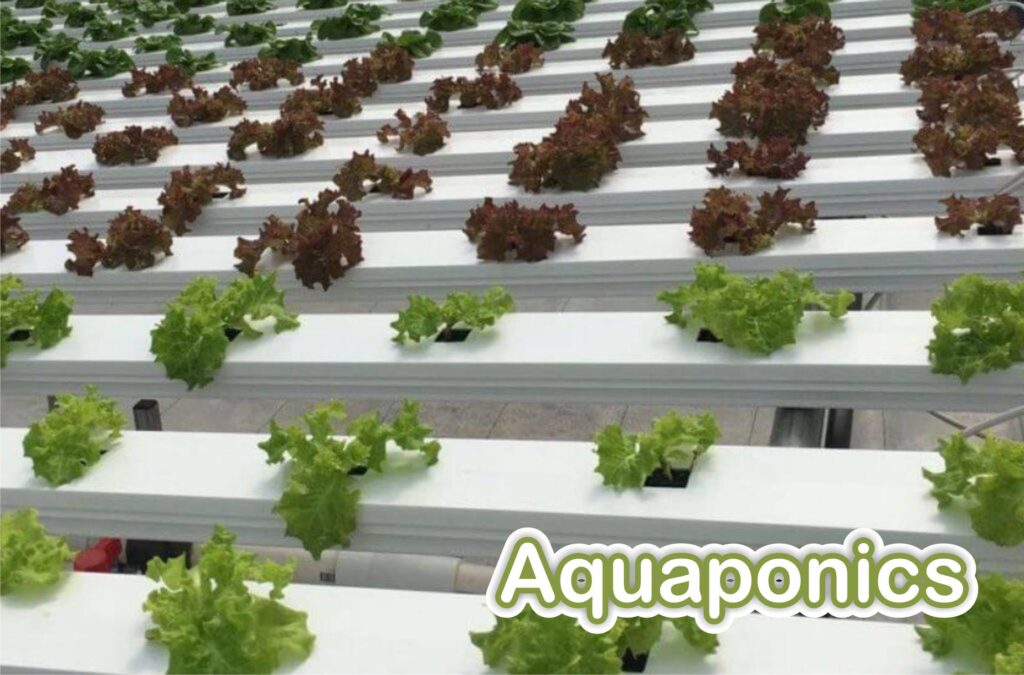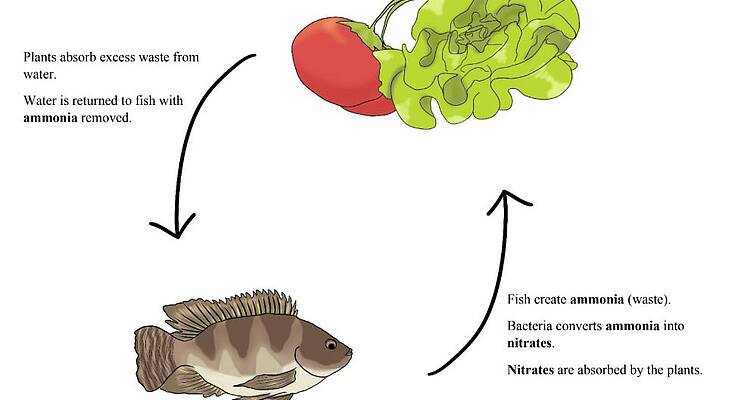
Aquaponics is a combination of aquaculture with hydroponics, which creates a self-sustainable system capable of producing food.

Amidst the time of climate change, the permanent depletion of natural resources has become a major cause for concern worldwide. This, accompanied by the COVID-19 pandemic, raises many questions regarding food waste and scarcity. The vast majority of Americans rely on grocery stores as a primary food source. However, if grocery stores had been shut down during the pandemic hundreds of millions of Americans would be without a source of food.
According to the United Nations (UN), the 17 “Sustainable Development Goals are the blueprint to achieve a better and more sustainable future for all. They address the global challenges we face, including those related to poverty, inequality, climate change, environmental degradation, peace and justice.” The second goal from this list is “Zero Hunger,” which strives to ensure that even those living in poverty around the world have long-term access to a sustainable food source.
Tamara Caraballo, 2019-2020 Regional Teacher of the Year and former science teacher at Glacier Peak High School, used aquaponics systems in her advanced biology classes with the UN’s Sustainable Development Goals in mind. Students would spend class time in the school’s greenhouse, where they would alter their team’s systems to be the most efficient.
Aquaponics combines aquaculture (fish, prawn, snails) with hydroponics (the cultivation of plants in water), which creates a self-sustainable system capable of producing food. For the system to work, nitrifying bacteria must be added to the fish’s water. This bacteria allows the plants to turn ammonia from the fish waste into nitrates, which is used as nutrients by the plants. Through this process, the plants are able to absorb waste from fish tanks and recirculate clean water back in.
“Aquaponics systems are organic; there is no fertilizer or pesticides required,” Caraballo said. “They also do not need soil and use less water than a typical outdoor garden.”
Each of Caraballo’s aquaponics systems consists of a 75-gallon tank of water for the fish, which is connected via tubing to shallow water bins above the tank. Foam floats submerge cup-sized baskets of round clay pellets in the shallow bins. These round clay pellets act as a biofilter and also hold saplings in place while they grow. As roots grow under the plants, fish waste is absorbed and the filtered water flows back into the fish tank.
“For fish, our classes use tilapia, goldfish and koi. As a food source, systems with tilapia would be the most successful because both the fish and the plants can be eaten. The foods we found to grow the best were tomatoes, lettuce and peppers – root vegetables were not ideal for our systems,” Caraballo said.
Similar to a garden or farm, an aquaponics system is capable of replacing grocery stores as a primary food source. With a large variety of fruits, vegetables and herbs that can be grown in addition to the fish that can be consumed as protein, a diverse aquaponics system could provide ample nutrients to a person’s diet. In this way, self-sustainable systems may either completely eliminate or slightly reduce the reliability most people have on grocery stores.
Aquaponics systems are versatile and customizable. Aside from fish and plants, the basic materials required to construct a system are a fish tank, plant bed, oxygen and heat sources for the fish, nitrifying bacteria, solid waste filter, water pump and tubing. Setup and design vary from person to person; systems can be industrialized on large scales or just a single-tank system in a backyard.
“Self-sustainable systems like aquaponics are so important, especially now, because of decreasing food security,” Caraballo said. “People around the world don’t have enough to eat. Because aquaponics systems can be put together with minimal equipment in nearly any environment, they are one of the most efficient ways to create a reliable food source.”
Source and photo Courtesy of The Clipper

